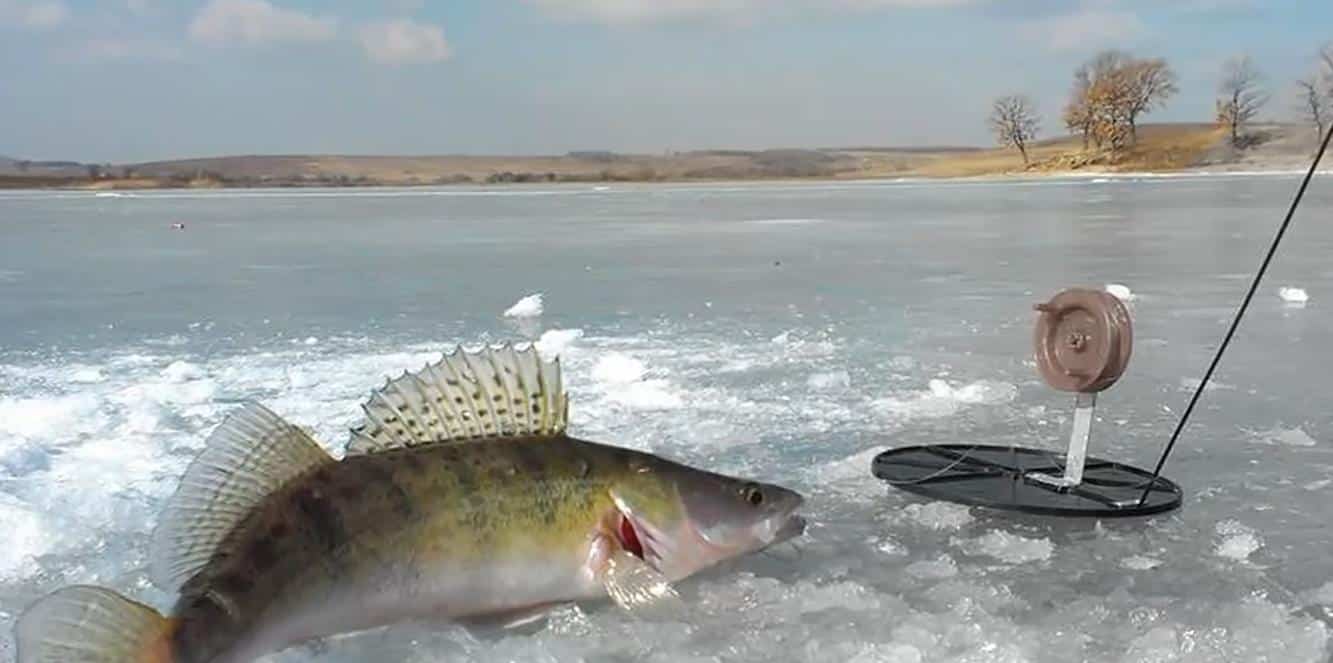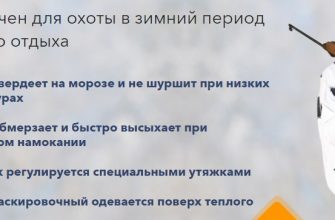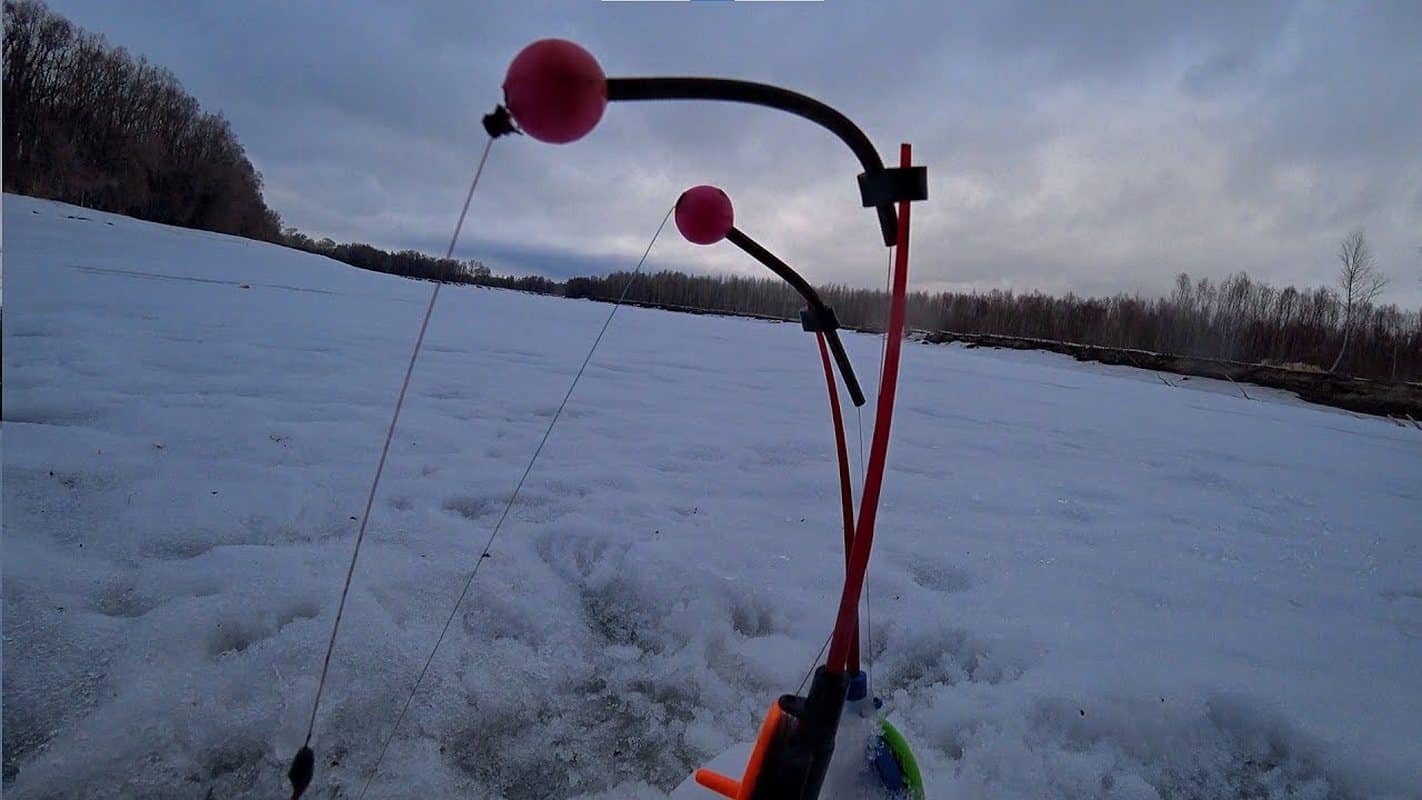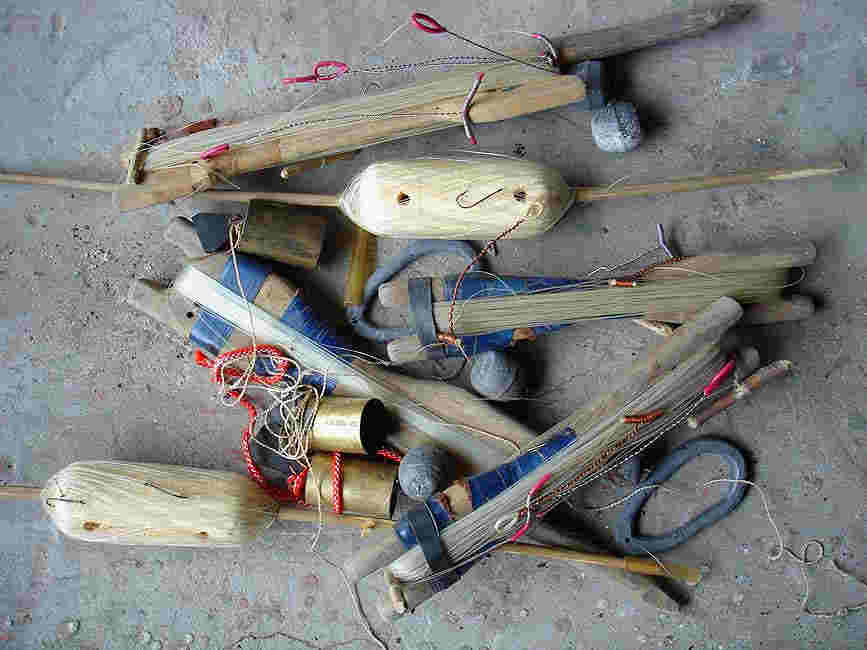Pike perch is rarely caught by fishermen, due to the relatively small habitat of other main freshwater predators of the CIS and the middle zone of the Russian Federation. It is not found everywhere, and where it lives, it is not easy to catch it. Zander is active throughout the year, so you can catch it both in summer and winter. Using the zerlitsa gives the fisherman a good opportunity to attract zander to live bait or sprat, but this method works only in situations when the zerlitsa is equipped correctly, the fishing place is chosen correctly, and the installation of the supply is made according to the correct scheme.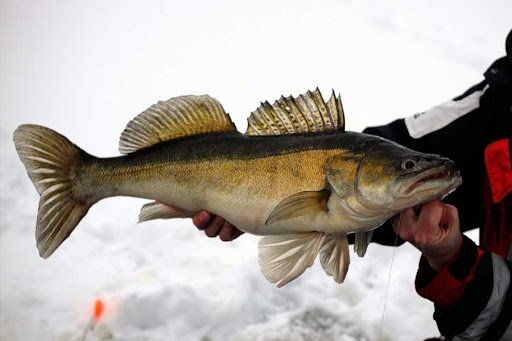
- Types of girders used when fishing for winter zander
- Where is the pike perch and how to look for it on the pond in winter
- Features of fishing on the river
- Catching pike perch in winter on sprat
- Catching pike perch in winter on gutters in closed reservoirs without flow
- Fishing in December, January, February – what’s the difference
- Secrets of catching zander on zander
- When and how to hook and then play out
- How to spot bites and check supplies
- How to enlarge the wells if necessary
- Fishing day and night – nuances
- Strategy for moving through an unfamiliar body of water
- Поделиться ссылкой:
Types of girders used when fishing for winter zander
Zherlitsa is a means for passively catching predatory fish. She is placed on ice, lowering the fishing line with live bait into the water. Zherlitsy are supplied with a bite alarm. As soon as the fisherman sees the signal, he needs to come up and hook the fish. The simultaneous use of several girders increases the chances of getting a good catch. Fishermen can put up to 30 of these tackles at the same time. This allows you to completely fish out a certain promising water area.
winter supplies are used . The most common is the following:
- The stand is made in the form of a disk with a slot for passing the fishing line.
- The spool holder is a vertically installed bar.
- An inertial coil is mounted on it. A fishing line with a rig is wound on it.
- A bite alarm is placed on the base of the girdle. It is a flexible plate half a meter long with a bright flag at its end. The plate is bent and fixed to the spool.
If the pike perch bites, the end is released, and the plate with the flag straightens, signaling the incident to the fisherman. To make the tackle convenient to store, holes are made along the edge into which the hook will be threaded. A classic variety of zander for catching zander with live bait and dead fish for winter fishing:
triggering on a pike… Fishing for large pike perch in large bodies of water may require 0.35 mm line. It is recommended to use inconspicuous equipment for fishing. If they are roughly done, then it can scare off the predator. A sliding sinker is used when fishing on a gutter. It will be able to keep the bait at the optimum depth, preventing it from swimming to the surface. Some fishermen prefer 7-10 grams. But in this case, the pike perch can, grabbing the bait, feel the heaviness and jump off. A sinker weighing 3-6 grams does not have such a disadvantage. It will not arouse suspicion in the predator, at the same time it will be able to keep the bait in the right place.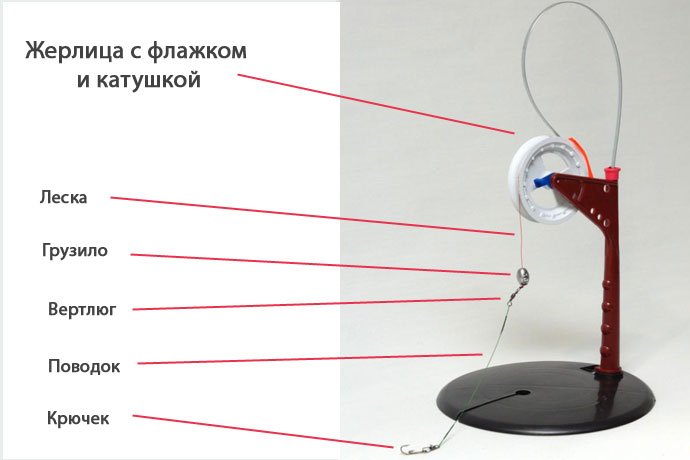
When choosing a hook, keep in mind that doubles or tees will be less effective when fishing zander with zander than a single hook. This is due to the fact that it is easier for the latter to pierce the jaw of a predator. The use of doubles or tees sometimes results in the fish simply poking at them and spitting out the hooks.
Some use a special twin collection. In this case, a large and small hook are used, located perpendicularly. At the same time, a live bait is pushed onto the first, and the second pierces the jaw during the sweep. A double of a special design for catching pike perch:
Bleaks , perches, minnows, roach 6-7 cm long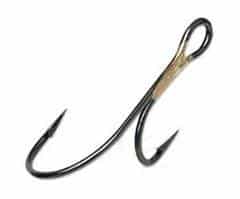
. They are usually caught with a
float rod on a jig. The fish is hooked in the following ways:
- For the lip . This option is suitable for catching zander in the current. The sting of the hook is inserted into the mouth and through the palate into the nostril.
- Behind the back . This method is more suitable for fishing in calm waters. The hook is stuck into the side of the live bait near the edge of the back and dorsal fin. He has to come out on the other side. In this case, you need to pay special attention to the fact that you cannot damage the spine of the live bait. Otherwise, it will become useless, since it will not be able to move and will become unattractive to predators.
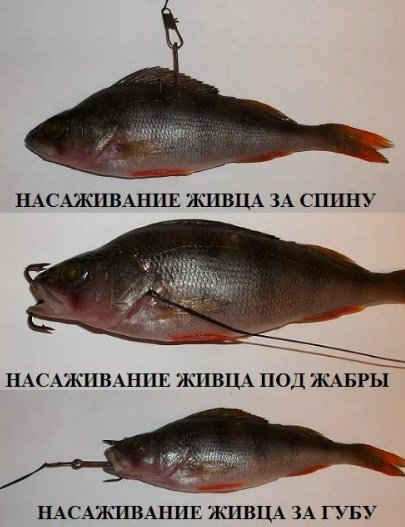
Where is the pike perch and how to look for it on the pond in winter
To successfully catch pike perch, you need to find a place where it lives in order to put the zander not empty. This predator prefers to hunt in such places:
- next to the edge;
- near the channel edge;
- in those parts of the day where snags lie;
- where there is a complex bottom relief.
The eyebrows are formed where the shallow part of the reservoir ends and the depth begins. Where there is a fast current, they are well expressed. It is more difficult to distinguish them in calm waters. These places are popular with fish, which are suitable for zander as food. Any pits, stones, roots at the bottom of the reservoir are suitable for an ambush for a predator. If the fisherman knows several of these places, then they will be well suited for setting up gutters. When fishing among snags, you need to take into account the high probability of hooks. Therefore, it is convenient to place the zippers not above them, but next to their edges. The predator likes rocky or sandy bottom. As soon as ice begins to form along the coast, the pike perch begins to hunt closer to shallow water. In winter, pike perch appears at the confluence of rivers and streams. This is due to the fact that the water here is richer in oxygen.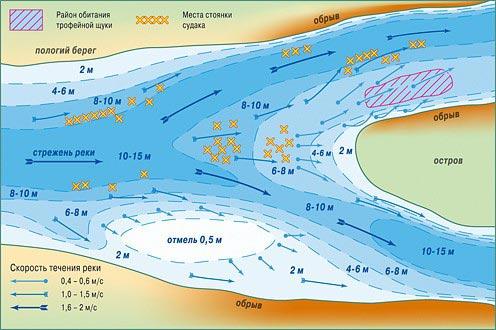
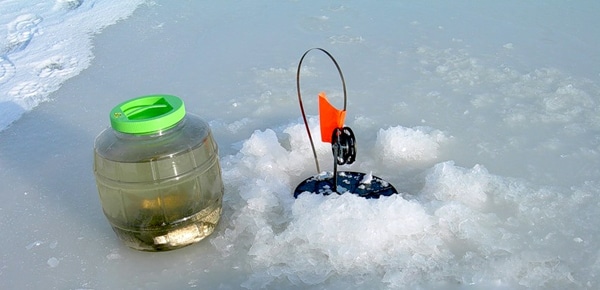
Features of fishing on the river
To catch pike perch on girders in winter, a line with a thickness of 0.35 mm and a length of descent from 5 to 10 meters, depending on the depth, is used. The weight of the lead should be approximately equal to 1/8 of the weight of the fry. For fishing on the river, a loop is made at the end of the main line. It is cut so that one end is 70 cm long and the other 30 cm long. A hook is tied to the long one, and a sinker to the short one. The weight is picked up the harder, the stronger the current. Live bait is baited through the lip. This is necessary in order for his behavior to be more natural.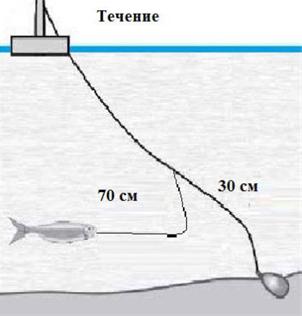

Catching pike perch in winter on sprat
Using tulka as bait is very effective, as this fish is one of the favorite delicacies of the predator. For pike-perch, not only live, but also removed tulle, motionless or cut into pieces, is used as bait.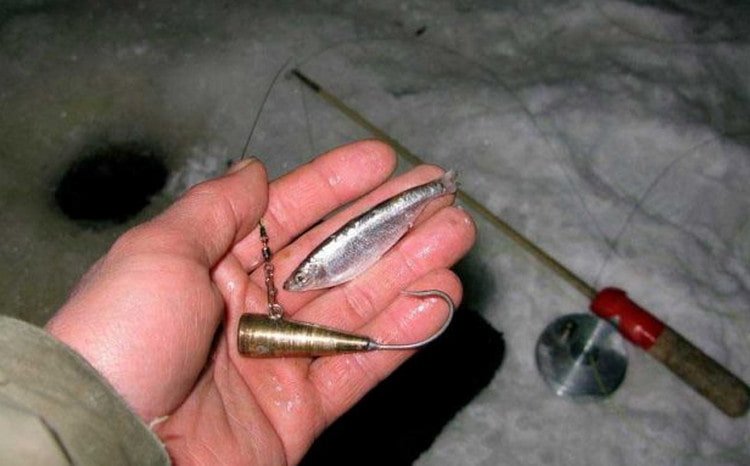
Catching pike perch in winter on gutters in closed reservoirs without flow
When the water is almost standing, during the installation of the tackle, the weight is moved closer to the hook. Its weight should correspond to about 1/8 the weight of the fry. In this case, he will be able to hold the live bait at the required depth and minimize its movement. Use monofilament line 0.30-0.35 mm thick. Its length should be several meters greater than the depth in the place where fishing takes place. A silicone stopper is installed, which will limit the length of the leash. A single hook is used for fishing, in rare cases a double can be taken. Catching pike perch on girders in winter – video from a pond, equipment and construction of supplies, bait bait, fishing process: https://youtu.be/u2xqOksrm4I
Fishing in December, January, February – what’s the difference
In winter, the fish is active on the first and last ice. During the rest of the season, it is inactive and feeds little, irregularly. In the middle of winter, the predator feeds only 2-3 days a week. The rest of the time it hangs motionless in the water. It is impossible to guess in advance when it will be active. This can only be found out empirically.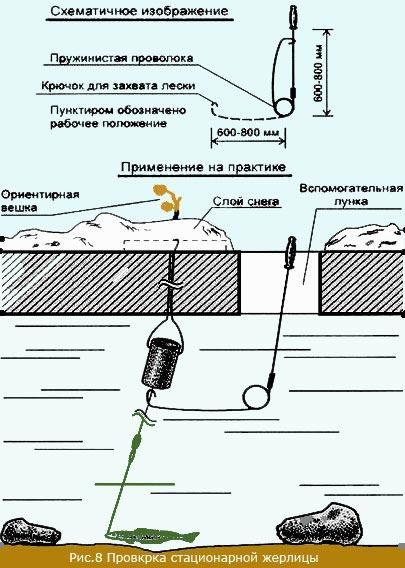
Secrets of catching zander on zander
Fishing for pike perch requires constant care from the fisherman, knowledge of the habits of predatory fish and the ability to catch it correctly.
When and how to hook and then play out
Sometimes the fisherman, as soon as he sees the signal, immediately tries to hook the fish. This is not always the most profitable option. Giving the predator time to swallow the live bait can give a better result. As soon as the fisherman feels resistance, the moment comes when you need to hook. The fish is tightened, constantly taking out the slack. As soon as it appears, pull it out with a hook or hand.
How to spot bites and check supplies
As soon as a bite occurs, the signal strip straightens and a bright flag becomes charged into the sky. This indicates that a bite has occurred. In order to detect it in time, you do not need to move far from the vents.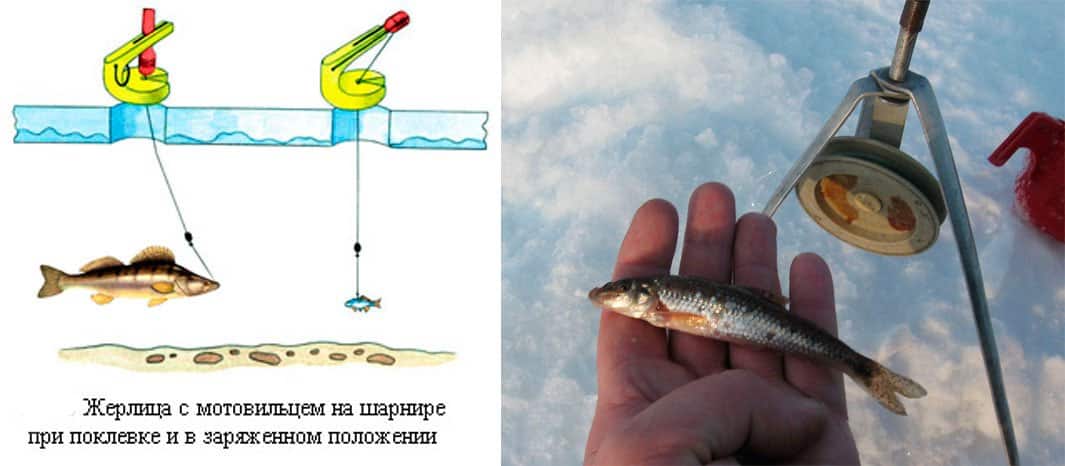
How to enlarge the wells if necessary
To widen the hole, you need to drill holes at an angle. In this case, the drill is gradually turned in different directions. The result is a larger hole. The increase in area will be the greater, the stronger the slope.
Fishing day and night – nuances
Zander is more active at night than during the day. It is better to arrange the gutters in the evening. For signaling devices at this time it is convenient to use fireflies, which will be far visible in the dark. Usually, in such cases, the delivery is checked in the morning. To prevent the hole from freezing, it is covered with a disk, which is sprinkled with snow.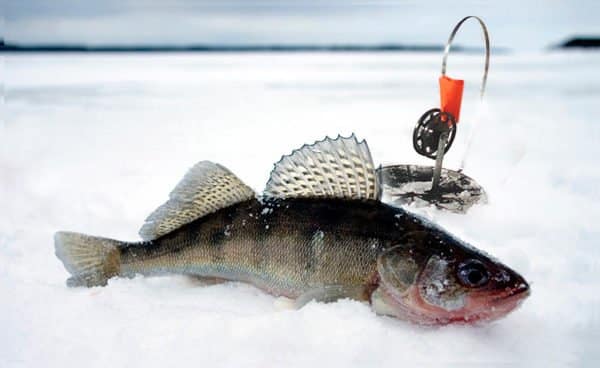
Strategy for moving through an unfamiliar body of water
You need to try in advance to find places where zander likes to hunt. This predator loves to hunt where there are bottom anomalies. Such places can be assumed even in unfamiliar bodies of water. They are placed on them. If there is a bite, then several more gnats can be placed next to it. When nothing happens for two hours, then it makes sense to move to a new place. It is convenient to fish in unfamiliar reservoirs with a large company. In this case, it will be possible to cover a significant area and identify more promising places. It makes sense to find out the bottom topography. To do this, you can drag a sinker over it. This will help you better choose places that the zander likes. https://youtu.be/NRL7ZTQ7qt0 Pike perch is a tricky catch. In order to catch him, you need not only skill, but also luck.The fish remains active throughout the year – this makes it possible to catch it, provided that the place where it hunts is found correctly.
